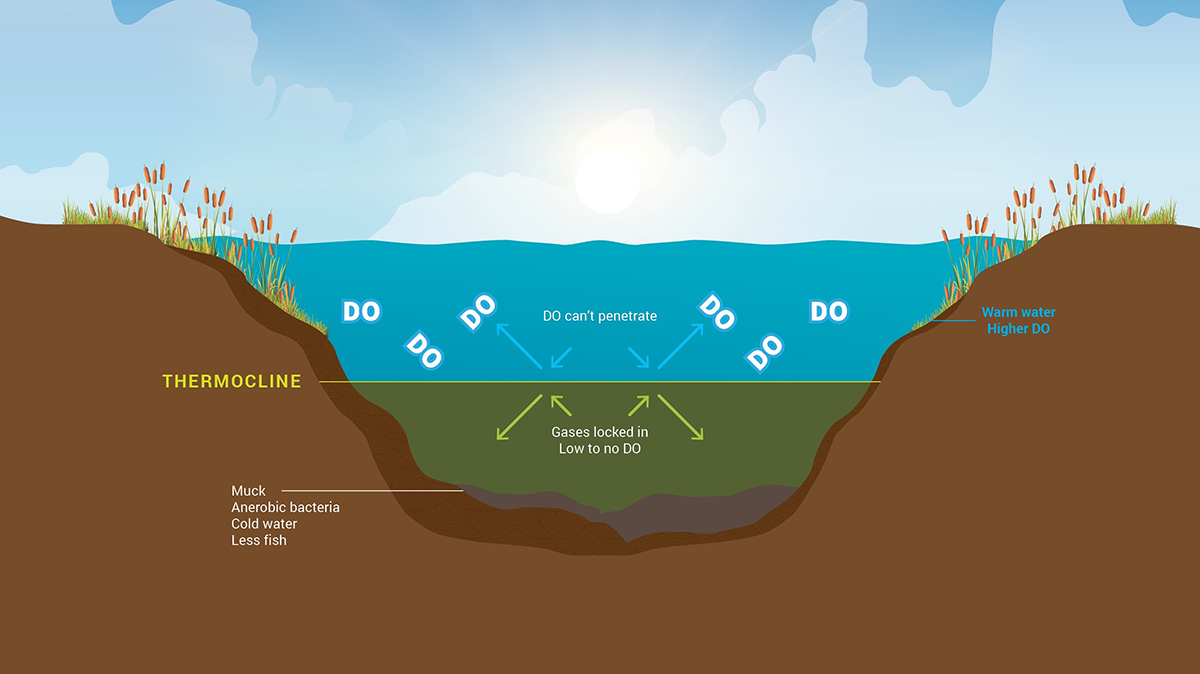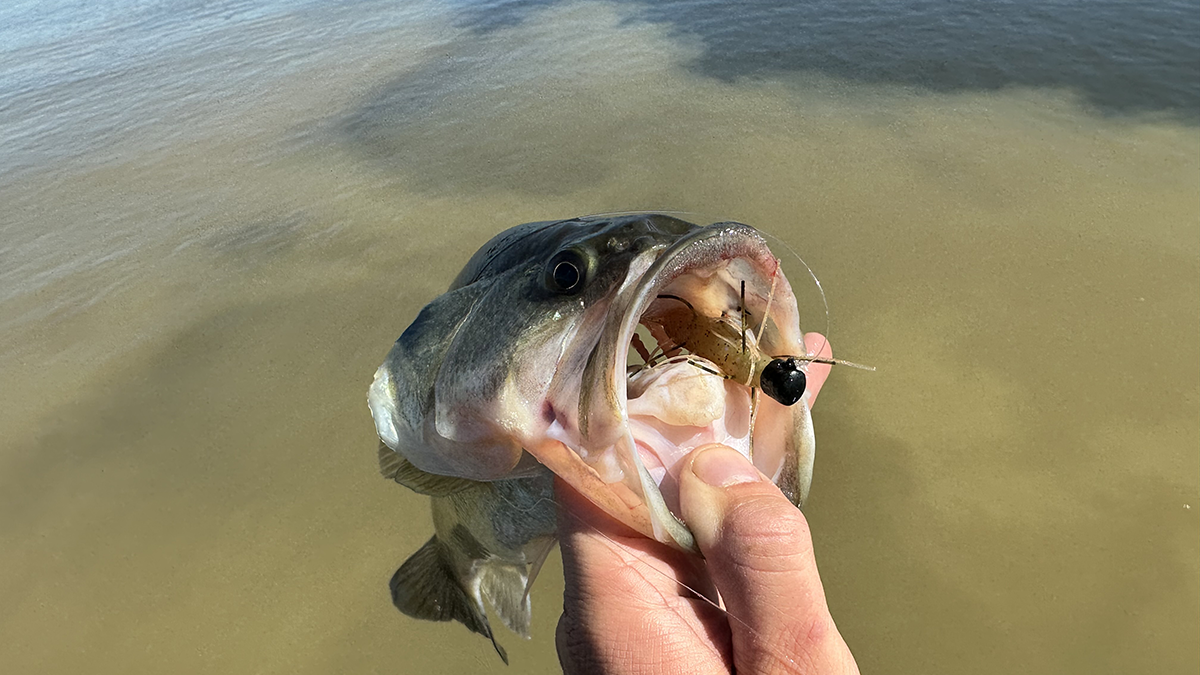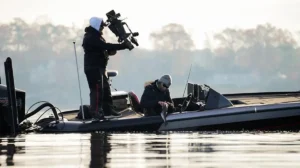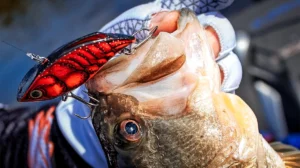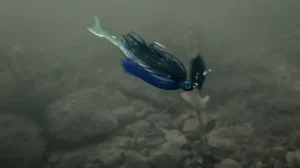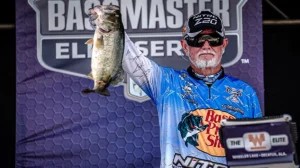Fall fishing is something I look forward to every year. While most anglers trade out their fishing rods for hunting rifles, there’s still ample fishing opportunities to be had. While fall fishing can be great, there’s a few seasonal factors you should be aware of. The thermocline is something every angler should focus on this time of year, as it largely determines fish positioning and behavior.
For anglers looking to maximize their success on the water this fall, understanding the thermocline is almost essential. This distinct layer of water plays a critical role in the behavior and location of bass, particularly during the fall and winter. By grasping the concept of the thermocline and how it influences bass behavior, you can significantly enhance your chances of a successful day on the water.
WHAT IS THE THERMOCLINE
The thermocline is a layer in a body of water where the temperature changes rapidly with depth. Typically found below the surface layer that warms up during the summer, the thermocline can vary in depth depending on factors such as water clarity, geographic location, and seasonal conditions. Generally, it acts as a barrier; above the thermocline water is warmer and less dense, while below it temperatures drop, creating cooler, denser water.
HOW THE THERMOCLINE AFFECTS BASS
Bass are ectothermic creatures, meaning their body temperature is regulated by their environment. As the water warms in summer, bass often seek cooler, more comfortable temperatures. This causes bass to congregate around the thermocline, providing them with the coolest, most comfortable water.
This layer becomes a prime location for bass as it provides access to food sources while also offering a refuge from warmer surface temperatures. During this time, understanding the depth of the thermocline can help anglers determine where to focus their efforts. Bass often relate to this layer, making it an ideal zone for targeting them with various techniques.
During the fall however, the behavior of bass shifts significantly, influenced largely by changes in water temperature and the thermocline. Water temperatures begin to cool, leading to a gradual breakdown of the thermocline. Unlike summer, when the thermocline serves as a distinct barrier between warmer surface water and cooler depths, autumn can see this layer fluctuate or even dissolve as surface temperatures drop. As the water cools, the thermocline rises, becoming shallower and less defined.
HOW TO IDENTIFY THE THERMOCLINE
Identifying the thermocline is crucial for effective fishing. There’s two different ways to do so, however using your electronics is likely the most effective method. Both forward-facing sonar and down imaging provide clean pictures of a thermocline, which will show itself as a distinct fuzzy line at a certain depth. It typically looks like disturbance on your graph, however it’s consistent at a certain depth range.
Another way to locate a thermocline is by using visual indicators. This method is much less reliable, however it still serves as a great way to quickly locate a thermocline or rapid change in temperature. In clearer waters, you may notice changes in water color or clarity as you descend. This can sometimes indicate the presence of the thermocline. You may also notice small bubbles or a film on top of the water. This signifies a lake turnover, which happens when the surface water temperature falls lower than the sub-surface water temperature.
HOW TO FISH AROUND THE THERMOCLINE
Understanding how to approach the thermocline depends on where it’s located in the water column. During the cooler months, the thermocline is often found towards the top of the water column. On most fisheries, it’s typically located between 15 and 30 feet of water this time of year depending on water clarity, geographic location and current weather conditions.
When the thermocline is high in the water column, I tend to focus on topwater lures and other shallow water techniques. Fish rarely if ever reside beneath the thermocline, therefore I always focus my efforts above it. Targeting both suspended fish and shallow fish are great techniques this time of year, and there’s a few basic lures I really rely on. These include the Reaction Innovations Vixen, the Megabass Vision 110 jerkbait and Z-Man Scented Jerk Shadz. All three of these baits are fall staples, perfect for targeting shallow bass keying in on shad.
In the summer I take a much different approach when targeting the thermocline. During the warmer months bass seek out cool, comfortable water. This is typically located right above the thermocline, creating the perfect location for bass to both feed and seek cover. During the summer the thermocline is generally much deeper in the water column. In my local fisheries, the thermocline typically resides in 30 to 50 feet of water, depending on a wealth of factors. Targeting the depth range directly above this thermocline is a great way to catch some quality limits of bass this time of year.
I use a wealth of different lures when targeting deep summer bass, however my staples consist of a Strike King Denny Brauer Structure jig, and Strike King 10XD Deep Diving crankbait, and a 6-inch True Bass Hollow Body swimbait. These lures are perfect for catching deep bass in a variety of scenarios. I prefer the jig whenever bass are relating to deep cover, however I’ll opt for the crankbait or swimbait whenever fish are relating to shell beds or open water.
WHY THE THERMOCLINE MATTERS
Understanding the thermocline is vital for any angler looking to improve their bass fishing success. This unique layer of water influences where bass feed, their activity levels, and their overall behavior, particularly during seasonal changes. By learning how to identify the thermocline and adjusting your fishing techniques accordingly, you can significantly enhance your chances of landing more bass.
Whether you’re fishing in the heat of summer or the cool of fall, recognizing the role of the thermocline will allow you to adapt your strategies effectively, making your time on the water more productive and enjoyable. With this knowledge, you’ll be better equipped to pinpoint where bass are lurking and maximize your fishing experience.


